#Kim Cho hee
Explore tagged Tumblr posts
Text
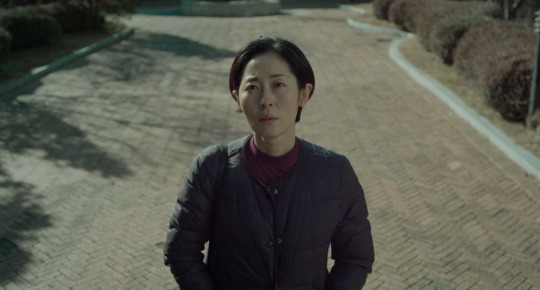

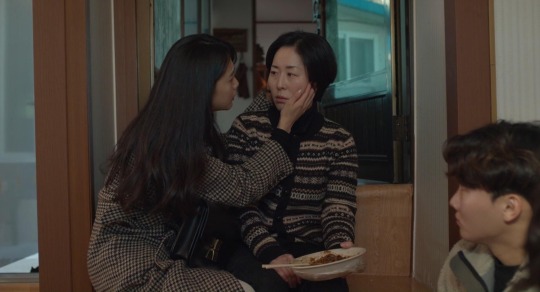


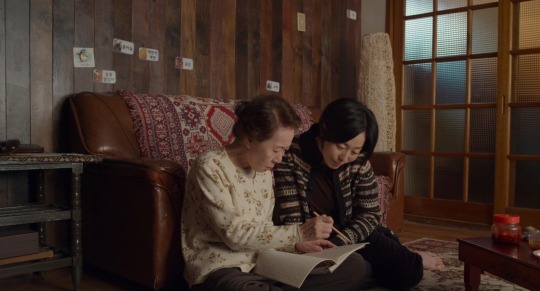
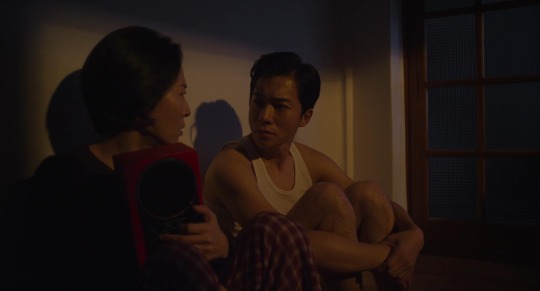



Lucky Chan-sil (2019)
Dir. Kim Cho-hee
#lucky Chan sil#Korea#Korean film#Asian cinema#drama#comedy#fantasy#kang mal geum#youn yuh jung#kim cho hee#hong sang soo
5 notes
·
View notes
Text
Squid Game text posts because I love this show ( pt 1 )
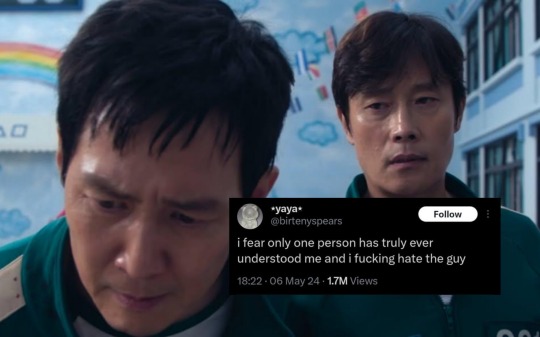
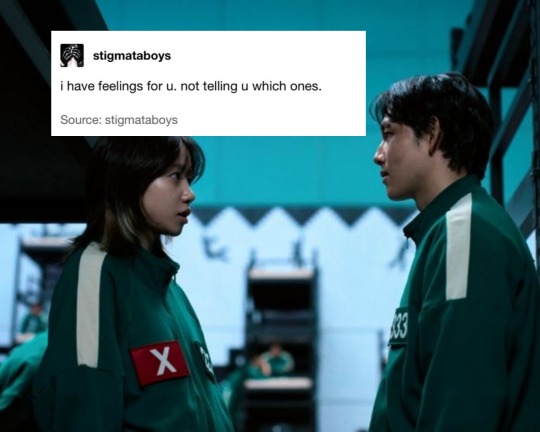
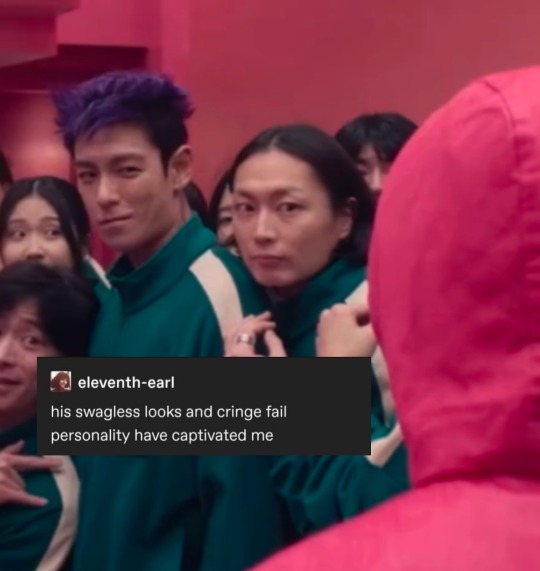
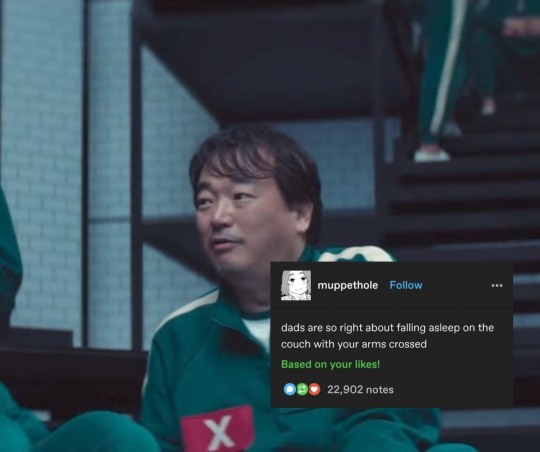
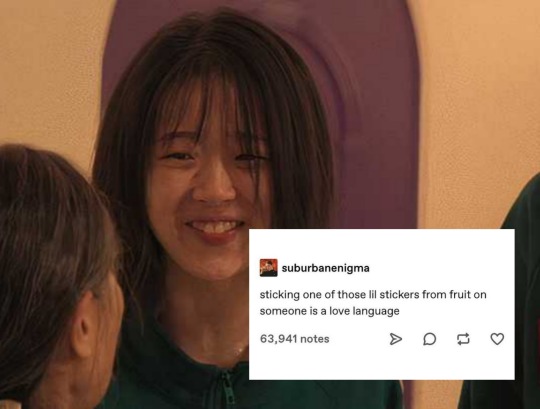
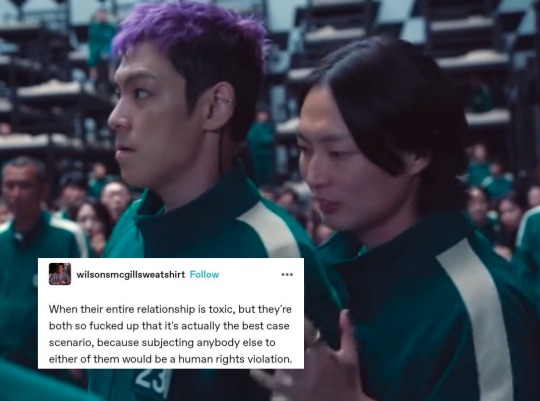
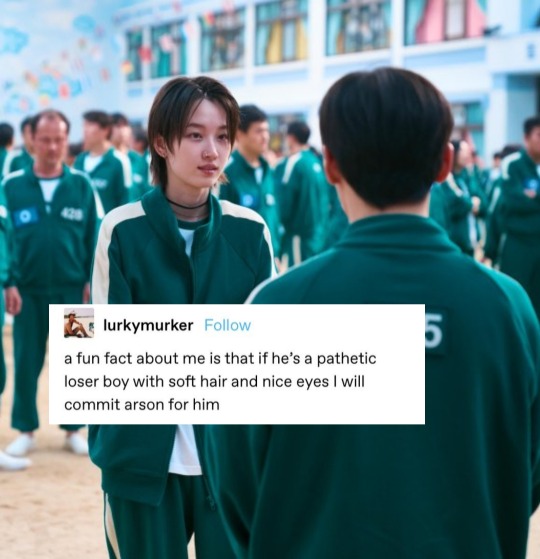

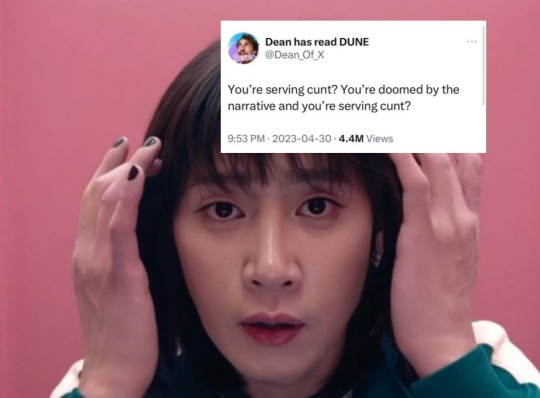
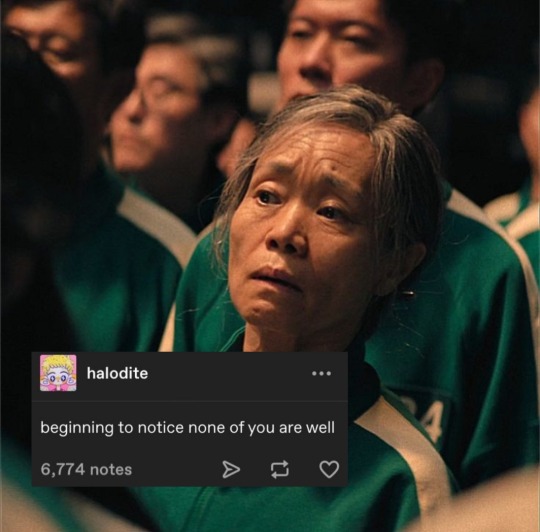

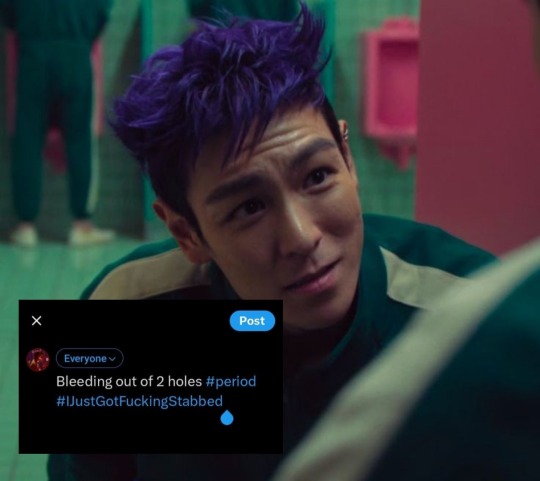
#squid game#squid game 2#seong gi hun#gi hun#gi hun x in ho#hwang in ho#in ho#kim jun hee#lee myung gi#jun hee#myung gi#choi su bong#thanos#nam gyu#thangyu#se mi squid game#min su#kim young mi#young mi#jung bae#park jung bae#park gyeong seok#cho hyun ju#jang geumja#not tagging everyone's numbers#squid game spoilers#squid game 2 spoilers
2K notes
·
View notes
Text


















Hyun-Ju [120] & Geum-Ja [149]
#squid game#squidgameedit#squid game spoilers#hyun ju#geum ja#jun hee#young mi#gi hun#lee byung hun#cho hyunju#jang geumja#park yongsik#kim youngmi
901 notes
·
View notes
Text


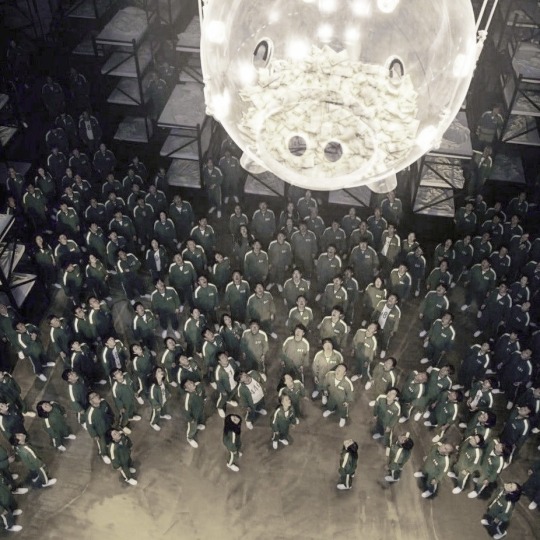
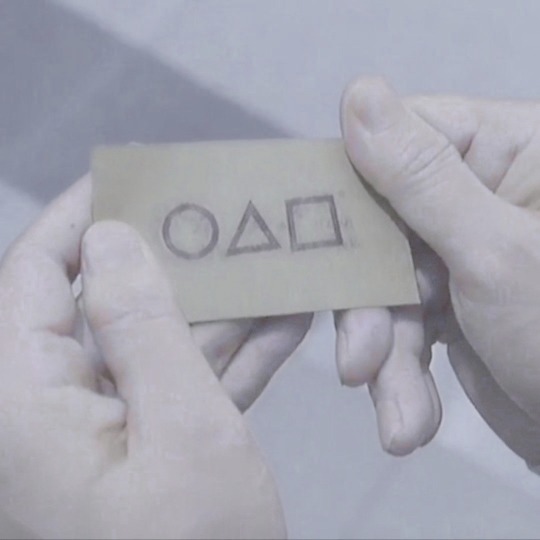
ೃ⁀➷ squid game masterlist ˗ˏˋ꒰ 🦢 ꒱
╰┈➤ hwang in-ho, cho sang-woo, seong gi-hun, park gyeong-seok, hwang jun-ho, lee myung-gi, kang dae-ho, choi su-bong

·˚ ◌༘₊· ͟͞꒰➳ hwang in-ho. ੈ♡˳
playing dangerous.
do you think you’d kill for me, one day?
ultraviolence.
shades of cool.
pretty when you cry.
gods and monsters.
let the light in.
·˚ ◌༘₊· ͟͞꒰➳ cho sang-woo. ੈ♡˳
million dollar man.
sad girl.
white mustang.
swan song.
your girl.
dealer.
lolita.
cola.
you can be the boss.
young and beautiful.
dark but just a game.
·˚ ◌༘₊· ͟͞꒰➳ seong gi-hun. ੈ♡˳
tba.
·˚ ◌༘₊· ͟͞꒰➳ park gyeong-seok. ੈ♡˳
tba.
·˚ ◌༘₊· ͟͞꒰➳ hwang jun-ho. ੈ♡˳
tba.
·˚ ◌༘₊· ͟͞꒰➳ lee myung-gi. ੈ♡˳
tba.
·˚ ◌༘₊· ͟͞꒰➳ kang dae-ho. ੈ♡˳
tba.
·˚ ◌༘₊· ͟͞꒰➳ choi su-bong. ੈ♡˳
tba.

#squid game#squid game fic#squid game fanfiction#squid game fanfic#cho sang woo#hwang in ho#hwang jun ho#the frontman#seong gi hun#lee myung gi#kang dae ho#hwang in ho fanfic#hwang in ho x reader#cho sang woo x reader#cho sang woo fanfic#kang sae byeok#ji yeong#kim jun hee#kang no eul#player 456#player 218#player 001#player 333#player 222#player 230#player 256#player 388#park gyeong seok
1K notes
·
View notes
Text
There's this very funny little detail in season 2 episode 5 where they are all cheering Hyunju's team winning the six-legged race and Jungbae turns and looks like he's about to hug Gihun or something and sees Inho/Gihun cheering off screen and he looks low key kinda startled by whatever homoerotic touching was going on between them, and he goes and hugs Daeho and Junhee again (he already hugged them) and it's the funniest thing ever to me.
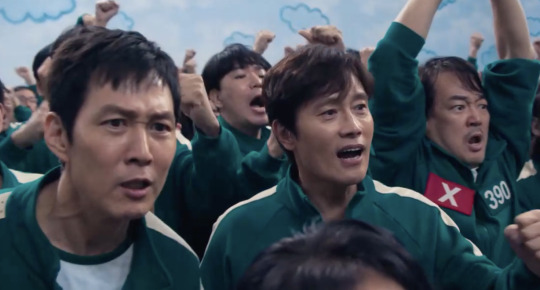
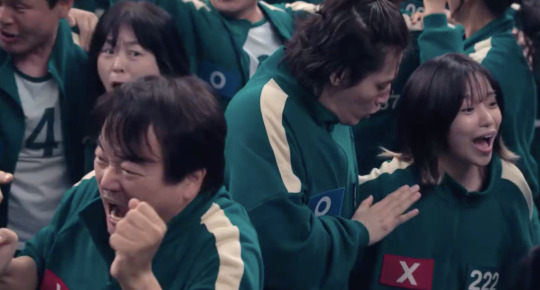
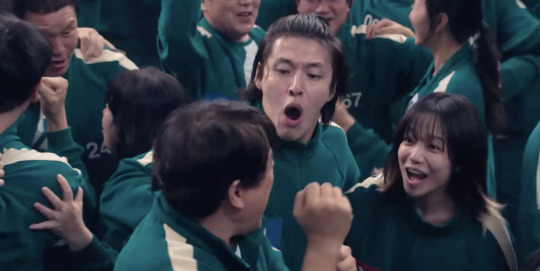
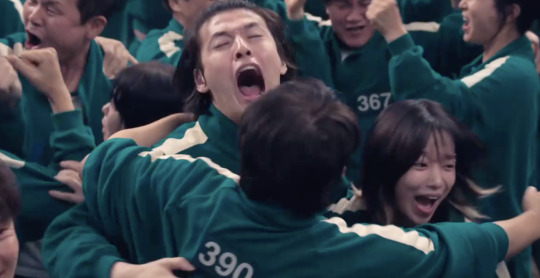
(^ here's them standing next to Jungbae, Jungbae turns and looks at Inho, whatever he sees is weird af or something but he doesn't hug either of them, and turns back around and hugs the other two wholesome ones)
He was a pretty solid bro and never tried to get in the way between Gihun and Inho. (yes I am still bitter Inho killed him. I understand why for plot sakes, but still) I mean, if it were Sangwoo, Inho probably wouldn't even have gotten the chance to sit next to Gihun in the first place (Sangwoo would probably be suspicious of Inho very early on. Inho had it easy with Jungbae).
And the two of them calling Gihun "hyung" would have been diabolical.
#justice for Jung bae#park jung bae#hwang in ho#inho x gihun#gihun x frontman#seong gi hun#gihun x inho#squid game#squid game 2#squid game 457#457#001 x 456#player 001#ginho#the front man#kang dae ho#kim jun hee#cho sang woo#hwang inho#inhun
473 notes
·
View notes
Text

#jiyeong is a girlfailure bc she died for a lesbian she knew for 24hrs#junhee is a girlfaliure bc she actually dated that idiot myunggi#i think the rest are self explanatory#squid game#seong gi-hun#seong gihun#seong gi hun#kang sae-byeok#ji-yeong#saebyeong#jibyeok#han mi-nyeo#kim young-mi#cho hyun-ju#kim jun-hee
533 notes
·
View notes
Note
Omg I love your headcanons but can you do a fluffy and silly one where the reader ask them an impossible question? Something like “if I punch myself and it hurts, would that make me weak or strong?”
Characters i suggest: Thanos, Junhee, Saebyeok, Se-mi, Namgyu, Hyunju, Jiyeong, Youngmi, Daeho please 🙏
Headcanons: if I punch myself and it hurts, would that make me weak or strong?💗
Featuring: Cho Hyun Ju x Reader(f), Thanos (Su Bong) x Reader(f), Kim Jun Hee x Reader(f), Kang Sae Byeok x Reader(f), Se Mi x Reader(f), Nam Gyu x Reader(f), Ji Yeong x Reader(f), Kim Young Mi x Reader(f), Kang Dae Ho x Reader(f)
A/N: Thank you very much for such a wonderful order! Please show an asset at this job. Also, those headcanons that were supposed to be today are postponed, sorry!
💗💗💗

It all happened when you and your partner decided to arrange a date and watch a movie in a hug, but while you were choosing which movie to watch, you got bored and that's what happened.
Cho Hyun Ju
- My love, if I punch myself and it hurts, would that make me weak or strong?
• She even choked a little and looked at you excitedly.
- Baby, did you beat yourself up?
- No! I just became interested, so I decided to ask.
• Ju calmly exhaled, and then laughed at your question.
- You're the strongest girl, and you don't have to beat yourself to prove it somehow.
- Am I really strong? You always protect me.
- Very strong. And I'm protecting you, because I love you very much.
• After that, she lovingly kissed you on the lips and you continued to choose the movie you wanted to watch.
Thanos (Su Bong)
- Honey, if I punch myself and it hurts, would that make me weak or strong?
• He looked at you with a strange face, he was obviously nervous about your question.
- Is this some kind of test with a trick? On the topic: am I a good guy?
- Nooo! I just decided to ask.
- I know you, you never just ask like that! There is definitely a correct answer there and if I answer incorrectly, you will be offended by me and we will not watch the movie.
• Yes, with your boyfriend such jokes are bad and it's better not to arrange them, you decided not to ask him further, but just kiss him on the lips, making it clear that everything is fine and you don't need to answer.
– Silly, don't ask me such questions anymore, I'll turn gray much faster!
Kim Jun Hee
- My love, if I punch myself and it hurts, would that make me weak or strong?
• The girl first thought about your question, she was not used to hearing such a thing.
- Can you repeat the question again?
– If I punch myself and it hurts, would that make me weak or strong?
- Is there any catch here?
- No, I just became interested.
• Hee thought a little more, then gave a clear answer with a serious face.
- Strong.
- Why?
- But it's not that you hit yourself, I missed it, because it's better never do it, you're strong and without it.
• You have a wonderful girlfriend and you understood that you were not mistaken in your choice.
Kang Sae Byeok
- Darling, if I punch myself and it hurts, would that make me weak or strong?
• You didn't hear the answer, the girl just kept looking for a movie that could be turned on?
- Sae Byeok..
• There was no answer.
- Why are you silent?
- Table.
- What? What does the table have to do with it? Did you even hear me?
- I heard, I answer stupid questions stupidly. You asked a stupid question, so I answer stupidly.
• You blushed, you were a little ashamed of your question, because you knew the girl's character.
- If you have nothing to do, please bring snacks while I turn on the movie.
Se Mi
- My love, if I punch myself and it hurts, would that make me weak or strong?
- God, honey, what nonsense are you asking?
- I'm just curious!
• The girl sighed heavily, looking at you.
- Only fools ask such things, and you're a smart girl and you understand that you don't need to beat yourself to prove that you're strong.
- Well..
- And don't look at the site anymore with stupid questions that will embarrass your soulmate!
• Se Mi pretended to be offended, but you saw how she barely held back a smile.
- Why is that??
- Because I'll take revent you and ask for something like that too.
• She was very serious, you both laughed at this whole situation later.
Nam Gyu
- Kitten, if I punch myself and it hurts, would that make me weak or strong?
• The guy suddenly began to look around, as if he was looking for something.
- What are you doing?
- The hidden camera you put.
- Why should I put it?
- To record a prank on your boyfriend in Tik Tok! I've seen similar videos!
• You laughed at Gyu, and he looked at you with a little anger.
- It was a joke, I just got bored.
- You know how they say that all troubles have the same beginning - the girl was sitting and bored!
• He was just afraid to do something wrong, so he got nervous.
Ji Yeong
- Baby, if I punch myself and it hurts, would that make me weak or strong?
• She didn't even think about it and answered pretty quickly.
- You would be crazy.
- Hey, why is that?
- First of all: I have a crazy girlfriend. Secondly: do normal people do this?
• She stared at you with a smile that made you blush.
- Come on! I'm just bored.
- It would be better to use your language for another instead of chatter.
• And she embarrassed you again, maybe you won't finish watching the selected movie.
Kim Young Mi
- Sweetness, if I punch myself and it hurts, would that make me weak or strong?
• She looked at you with great excitement and you felt uncomfortable.
- Are you beating yourself??? Why didn't you tell me that before???
- Quieter, quieter! I'm not beating myself! I saw such a joke on the Internet, I decided to ask you something like this.
• She looked at you with incomprehension, and you decided not to continue this topic.
- Okay, let's not talk about it, stupid joke.
- Strong..
• She said very quietly, but you still heard her and a warm smile appeared on your face.
Kang Dae Ho
- Darling, if I punch myself and it hurts, would that make me weak or strong?
• The guy looked at you with a smile, and then said loudly and clearly as if he was honoring the army general.
- YOU ARE A STRONG GIRL AND ALL YOUR ACTIONS PROVE IT!
• You were pleased to hear and embarrassed, as you understood that the guy did not fully understand the essence of the question, but decided not to ask about it anymore.
- Thank you!
- I love you very much! I am ready to answer any of your questions!
💗💗💗
#cho hyun ju x reader#cho hyunju#hyun ju squid game#hyunju x reader#hyun ju#player 120 x reader#thanos squid game#thanos x reader#player 230 x reader#kang sae byeok#sae byeok x reader#player 067 x reader#nam gyu x reader#player 124 x reader#se mi x reader#player 380 x reader#kang dae ho#player 388 x reader#kim jun hee x reader#player 222 x reader#kim youngmi#player 095#ji yeong x reader#player 240#squid game#squid game headcanons#squid games x reader#squid game 2
290 notes
·
View notes
Text
blood on your hands
kang dae ho x f!reader
in which you commit an act so unforgivable, yet reasonable

warnings: murder, death, nsfw!! 18+, minors please dni. smut with plot. oral (dh receiving). switch!daeho. switch!reader. praise. no PinV. VERY long chapter. dark chapter. original plot changes. y/n is used. reader is player 099. reader is the murderer. established relationship with dae-ho before the games. this takes place after the mingle games. the original character in this fic is player 123. I am not responsible for the content you choose to read after you hit, "keep reading"
4.6k words

the bathroom is a mess of bodies and tension.
the air thick with sweat, fear, disgusting body waste, and the sharp buzz of the overhead fluorescent lights. the guards stand at the entrance, their rifles slung carelessly over their shoulders, barely paying attention.
they know no one is dumb enough to try anything here, not after the mingle game.
a game in which you barely survived too.
anyways, you should be focusing on keeping jun-hee safe, making sure she gets in and out of here without trouble, but your mind keeps circling back to dae-ho.
your man.
the love of your life.
the marine’s voice is still fresh in your ears.
"stay safe, no heroics."
all of the women were assigned to all go to the bathroom before lights out. you had smiled at him, something small, something just for him.
"i’ll be okay,"
you had promised, squeezing his hand.
"i'll stay with jun-hee the whole time."
he hadn't liked it. you could tell by the way his jaw clenched, by the flicker of hesitation in his eyes, like he wanted to argue but knew it would only make things harder. he is super protective about you, even before the games back at home.
in the end, he let you go, but not before tucking a loose strand of hair behind your ear, his touch lingering like he was trying to memorize you.
"come back to me."
you had nodded. you always would.
the two of you had been together for years. your relationship wasn’t new, wasn’t fragile. it was something built, something strong, something that had withstood everything life had thrown at you before the games.
this?
this was different.
this was a nightmare neither of you had ever prepared for.
when you first locked eyes after red light, green light, it felt like the world had cracked open. neither of you had known the other would be here.
neither of you had imagined, in your worst nightmares, that this was how you’d meet again after not seeing each other for days.
after meeting the salesman, the both of you had a plan to pay off each other's debts. unaware that the other had the same exact plan too.
the first game, dae-ho had stormed across the bloodstained ground, past the trembling bodies of the survivors, past the bodies that would never move again, and grabbed you like you were slipping through his fingers.
“why are you here?"
his voice had been raw, panicked.
"how…why…"
"why are you here?"
you had shot back, just as desperate, just as lost.
you both had kept your struggles quieter than you should have, thinking you could handle them alone. thinking you didn’t have to drag each other down.
it didn’t matter now.
now, all that mattered was surviving. together.
which was what led you here…standing in a sea of exhausted, wary women, pushing into the bathroom with jun-hee behind you and hyun-ju in front, keeping them close, like a shield.
you aren’t the only one on edge. hyun-ju’s beautiful eyes are scanning, assessing. she turns around and catches the way your fingers twitch at your sides, the way your shoulders stay stiff.
"you okay?" her voice is low, careful.
you force a small nod.
"just need to pee badly."
it’s a lie.
hyun-ju knows. she reads people too well…probably from whatever special forces training she’s had.
she doesn’t press, just gives you a look before shifting her attention elsewhere.
it’s not the bathroom that has you tense.
it’s her.
player 123.
she’s already ahead, pushing through the group like she owns the place along with her goon’s, loud and grating. she hasn’t stopped talking since mingle. hasn’t stopped running her mouth.
"you see that one triangle guard earlier?"
she crows to no one in particular, shoving her elbow into the woman next to her.
"dude was practically asleep. i bet i could’ve grabbed his gun…boom, game over."
the woman beside her gives a nervous laugh, stepping away. no one outside of her dickriding goons wants to be near her…she’s too reckless, too unpredictable.
your fingers curl into a fist at your side.
you don’t trust her. not after what happened in the six-legged penalathon.
you and player 123 had almost killed each other.
it had been an accident, but that didn’t matter. the two of you had made a mistake, a single misstep, a moment of hesitation that had nearly sent both of you crashing to your deaths. and she blamed you.
the audacity.
when jun-hee came to your group, asking to join. you gave up your spot for the woman. dae-ho protested, but you told him that the pregnant woman needs to live, so being with men will help her.
dae-ho intensely watched you as you approached 123 and her group of 4. player 123 said you could join, since she needed another woman who looked, “as fit as you.”
however, that was a mistake.. since you both nearly tripped when you were running to the finish line.
since then, she hated you..
you weren’t exactly fond of her either.
you keep jun-hee behind you as the crowd shifts into the cramped bathroom. it’s a tight space, bodies pressing in on all sides. no privacy, no safety.
you aren’t the only one feeling it…jun-hee shifts uncomfortably, pressing a protective hand over her stomach. you glance at her, lowering your voice.
"we’ll be quick. i won’t let anything happen."
she nods, trusting.
too trusting.
you can feel player 123's presence, her laughter cutting through the thick air like a blade. she’s talking again, louder now, complaining about everything.
"this is ridiculous," she groans, kicking the bottom of a stall.
"they’re treating us like animals. like we’re not even people."
you bite back the urge to snap.
because that’s the thing...she’s not wrong.
that doesn’t make you hate her any less.
hyun-ju watches you carefully from the side, tracking the way your body tenses, the way your fingers tap against your leg like you’re holding yourself back from something.
"she’s not worth it," hyun-ju mutters under her breath.
you exhale sharply, steadying yourself.
"i know."
that doesn’t stop you from keeping an eye on player 123. doesn’t stop the weight of her presence from pressing into you.
because in a place like this, grudges can get you killed.
the guards stand lazily outside of the entrance, their rifles hanging at their sides, not paying attention.
they don’t care about the many players inside one hot room.
but you do.
you keep jun-hee close, guiding her toward the stalls. she looks miserable, her hand resting over the curve of her belly, shoulders tight with exhaustion.
"y/n, i just need to sit for a second."
jun-hee pulls you towards the first stall.
she goes into one of the stalls, locking it behind her, and you let out a slow breath. your heart is still racing. not because of the guards, not because of the way the other women keep their eyes peeled for weakness…but because of player 123.
you hear her voice somewhere off to the side, barking out a laugh, too loud, too confident.
"these stalls are disgusting, i swear to god. like what do they want us to do? piss outside?"
she’s talking to no one in particular, but the woman next to her lets out a forced chuckle, clearly too nervous to ignore her.
“she is so fucking annoying!”
you think.
your jaw clenches, fingers twitching at your side.
you don’t trust her. you never have.
so when jun-hee comes out of her stall, you decide to go in after her. not because you need to pee, but because you don’t want to have to go later, when things could be worse.
“i’ll be quick," you murmur, passing by hyun-ju, who is by the sinks, watching everything like a hawk.
"stay alert," she tells you.
you nod, stepping inside the stall, locking it behind you.
you sit, but your mind is elsewhere, lost in the horrors of the game.
everything blurs together…the blood, the screams, the crack of bones snapping under pressure. you squeeze your eyes shut, pressing your palms into your thighs, trying to push the thoughts away, trying to remind yourself that you're still here. still breathing. still alive.
BANG.
your entire body jolts at the sudden impact against the stall door.
"can you hurry the fuck up?"
that voice.
your blood runs cold.
player 123.
you don’t say anything, don’t react, hoping she’ll just move on, but then
she crawls under the stall.
your breath catches in your throat, horror spiking through your veins as her hands and knees scrape against the filthy tile, her face appearing under the gap before she pulls herself inside, into your space.
"are you fucking stupid?"
you snap, scrambling to pull your joggers up as you stagger to your feet.
she just laughs.
loud, grating, obnoxious.
"oh? oh, look at that." she grins, rocking back on her heels.
"it’s the stupid bitch who almost got us killed!"
your fists clench.
"get the fuck out,"
you hiss, pushing past her to unlock the door.
she follows you.
you storm toward the sinks, your entire body thrumming with rage. she’s right on your heels, her voice sharp and mocking as she keeps egging you on.
"what’s wrong, 099? mad i called you out? mad that you’re such a weak bitch who made it this far? "
you ignore her, stepping toward the sinks where hyun-ju and jun-hee are.
she doesn’t stop.
"you think you’re some big hero? sticking with your little group like you’re different from the rest of us? newsflash, sweetheart…nobody here is safe."
your hands shake. you grip the edge of the sink, trying to steady yourself.
then she says it.
"you know... i started to notice how close you and player 388 are. are you guys together?"
123’s tone shifts, turning cruel, taunting.
you stare at her through the mirror, hoping she shuts the fuck up.
"wait, awee you guys are together! you know.. he’s such a charm. i cannot wait to steal him when you die during the next game!"
that’s it.
before you can even think, your body moves on its own.
you turn, your fist flying through the air, and the impact is satisfying to your mind and knuckles.
CRACK.
your knuckles collide with her face, sending her stumbling backward, her body hitting the ground with a hard thud.
someone gasps.
her goons rush forward, helping her up.
hyun-ju steps toward you, eyes sharp, but before she can say anything—
all hell breaks loose.
somewhere in the room, another fight erupts.
two randome women claw at each other, snarling like wild animals, hair being pulled, screams echoing off the tile.
and then, like a chain reaction, everyone starts fighting.
jun-hee stumbles back against the wall, hiding, pressing her hands over her stomach, panic flashing across her face. she knows she doesn’t stand a chance in this chaos.
hyun-ju moves quickly, diving into the mess, trying to break up fights before they get worse.
you…you don’t get the chance.
because player 123 tackles you.
you slam into the sink counter, pain exploding through your ribs.
"you wanna fucking hit me, huh?"
she seethes, grabbing onto your shirt.
"you bitch! you think you’re tough?"
you fight back, gripping her by the shoulders, trying to throw her off. but she’s strong, fueled by anger, by adrenaline.
you both go crashing to the ground.
she’s on top of you, fists flying.
one punch.
two.
three.
your face is bruised, bloodied.
your vision goes blurry, the taste of iron thick in your mouth as blood pools around your molar teeth.
you gasp, hands scrambling for anything.
you grip 123’s neck, trying to choke her, trying to stop her punches, but she just snarls, yanking at your hair, slamming your head back against the tile.
someone—se-mi—tries to pull her off.
but it’s not working.
you’re losing.
then
something presses against your thigh.
your metal fork.
the one from earlier’s meal. the one you saved, just in case something like this happened
your fingers close around it inside of your pocket.
without thinking..without hesitating..
you move your right hand quickly and plunge it into her neck.
she freezes.
123’s brown eyes go wide.
her hands, her fists, stop.
she limps, her body crumbling.
however, that was not enough.
something inside you snaps.
you stab.
again.
again.
again.
again.
again.
over and over and over until..
"STOP!"
arms pull you back… hyun-ju.
your breath is ragged, your chest heaving.
player 123 is dead.
her body is still.
her blood is everywhere.
you don’t realize what you’ve done…not really…until hyun-ju drags you into the hallway, pushing you against the wall beside a guard.
you’re hyperventilating. those pink lungs of yours cannot seem to catch a breath.
hyun-ju doesn’t yell at you. doesn’t scold you for murder since that would be hypocritical of her. she just takes the bloody fork from your hands, wipes at the blood on your face…though your 099 shirt is already soaked in red.
"breathe," she orders.
you can’t.
"what did i do?"
jun-hee stands nearby, eyes wide, face pale.
she looks at you, then at the bodies inside.
"nothing. since nothing will be mentioned to the others,"
she says quietly.
you nod.
silent.
back to the dorms.. you can barely walk.
your legs feel like they don’t belong to you, and the weight of what you just did claws at your chest, sinking deep into your ribs, making it hard to breathe.
hyun-ju keeps her arm wrapped tightly around you, holding you up, making sure you don’t collapse under your own exhaustion. your shirt is soaked in blood..
some yours, most of it hers.
player 123 is dead.
you did that.
you killed her.
yet, in this moment, all you can focus on is putting one foot in front of the other as you and the remaining women shuffle back into the dorms.
the second the doors open, the tension inside the dorm shifts.
the men had heard everything.
the screams.
the fighting.
the pounding of bodies slamming against the walls, the stalls, the sinks.
the killings.
it was a nightmare.
and dae-ho almost ran after you.
he had almost lost his mind when the first screams from multiple women echoed through the halls, his entire body lurching forward, ready to run, to fight, to protect you, before jung bae grabbed him.
"don’t." jung bae had hissed, forcing him to stay put.
"we don’t know what’s happening yet."
"it’s a fucking massacre, that’s what," young-il had muttered under his breath, his face pale as they all listened.
dae-ho couldn’t stay calm.
he was barely breathing, his hands clenching and unclenching, his mind running a thousand miles a minute.
you had told him you’d be okay.
you had promised.
but then why did the screaming keep going?
why did it sound like hell itself had broken loose in there?
at one point, it sounded like you were screaming.
it was, it was when you were repeatedly stabbing 123 over and over again.
back in the dorms, dae-ho kept trying to reason with himself.
you don’t start fights.
you aren’t reckless.
then he remembered the way you and 123 had argued after your group barely survived the six-legged penalathon…by four fucking seconds.
he remembered 123 cursing you out, yelling about how you should’ve died instead of her almost falling.
he remembered the way you just flicked her off, walking away.
she was a loose cannon.
123 was like thanos and namgyu smashed into one woman.
what if—
the doors open.
the women return.
and it’s worse than he imagined.
the ones who come back look horrible.
some are bloody. some have fresh bruises. some have torn shirts, missing shoes, swollen faces.
but not as many women return as there were when they left.
dae-ho’s stomach drops.
he scans the group frantically.
the marine’s heart hammers.
his eyes land on hyun-ju and jun-hee first…both fine, exhausted but fine.
then he sees you and his blood runs cold.
his baby. his love.
you look destroyed. your face is bloodied. your right eye is swollen. there’s a deep cut above your eyebrow, blood trailing down your cheek, dripping onto your already soaked shirt.
your lips are busted.
your knuckles are bruised and your hands are shaking.
"what the fuck happened?"
dae-ho’s voice is sharp, broken.
hyun-ju doesn’t answer right away.
instead, she tightens her grip on you, like she’s trying to shield you from his panic.
it’s too late.
he pushes forward, prying you out of hyun-ju’s arms, cradling you in his own.
his hands hover over your face, your wounds, your bruises, like he doesn’t know where to touch, where to fix, where to start.
"baby, oh my god, what did they do to you?" his voice breaks.
he lifts you into his arms, carrying you straight to his bed, settling you down gently, as if you might shatter if he moves too fast.
you don’t say anything.
you can’t.
because if you open your mouth, if you speak,you might just say what you did.
so instead, you stare at the ceiling, your breath shallow, your fingers gripping the sheets beneath you.
hyun-ju and jun-hee exchange a look.
they don’t tell him.
they don’t say what really happened.
that is your place, not theirs.
they don’t tell him that you killed player 123 in a fit of survival and rage, stabbing her over and over again until her body was lifeless.
instead, hyun-ju lies.
"a fight broke out. everyone was attacking each other."
dae-ho’s jaw tightens, his eyes flicking over every bruise, every wound, every drop of blood.
"and she was attacked?"
jun-hee nods.
"we barely made it out."
dae-ho exhales sharply, his hands trembling as he tears a piece of his 388 shirt, dipping it into some cup of water (belonging to gi-hun) before gently pressing it against your wounds.
"fuck, i should’ve been there," he mutters.
"i should’ve protected you."
you swallow.
dae-ho’s words make your chest ache in a way you can’t explain.
he doesn’t know.
he doesn’t know what you did.
he doesn’t know that you aren’t just hurt.
you are a killer now.
across the room, young-il/001/the frontman undercover watches you carefully as he sits beside a worried gi-hun and jung-bae.
his eyes linger.
he knows.
he doesn’t say anything, doesn’t make a scene, but you catch the way he scans the room, the way he takes note of who came back..and who didn’t.
123 isn’t here
he knows.
you don’t look at dae-ho.
you can’t
because then you’d have to acknowledge it. and right now, you just want to pretend.
pretend you didn’t just take a life.
pretend you’re still you.
the speaker comes on and the room freezes as everyone listens. suddenly, the names of the eliminated players in the women’s bathroom echo through the dorms.
"player 037. eliminated."
"player 272. eliminated."
"player 081. eliminated."
"player 410. eliminated."
"player 008. eliminated."
"player 072. eliminated."
and then..
"player 123. eliminated."
the second her number is called, the room shifts in your perspective.
your stomach twists.
dae-ho’s eyes snap to you.
then to hyun-ju.
hyun-ju turns away.
you tense.
but he doesn’t know.
not yet. not yet.
because lights out is coming.
during lights out, you wake up to dae-ho who is looking up at the ceiling. the ceiling where the gold pig sits with all of the money. the money from the dead players.
“baby, is everything alright?”
you ask lightly, putting your hand on his upper thigh as he looks over at you.
the man smiles lightly, brushing a piece of hair off of your forehead as you close your eyes.. taking in his touch.
“i should be asking you that.”
dae-ho responds.
of course you are still thinking about the murder you committed. however, you know that there will not be any legal consequences. the guards and this whole game is illegal itself!
however, you wonder how dae-ho will look at you.
he used to talk to you about a murder that he committed while he was in the marines. the one thing that started his PTSD while serving. however, he was forced to do that.
you were not forced.
well, that is debatable.
since you were acting in self-defense.
you brought your sore lips over dae-ho’s and started kissing him soflty, moving his hands to your ass while you sat your clothed core on top of his bulge.
“y/n.”
he groans through your lips.
“hm.”
you smirk.
“is this alright? i don’t want you to feel uncom–”
“we need a distraction, dae-ho.”
two minutes later, your lips around around his fat tip. the marine’s head laid back against the hard wall, his pants pulled down to his ankles as you took his whole length inside of your throat.
you were distracting yourself. your focus is fully on your lover’s scent, his big dick in your throat, your hands massaging his balls, and the way your lashes batted up at his eyes while you sucked his dick.
this is the only way you can distract yourself from earlier. the murder. the murder you commited.
dae-ho wrapped your hair in a ponytail with his hands while you continued to do your work. you concentrated your tongue on a particular vein on his shaft while arching your back in the process.
"fuck, you're sucking me off so perfectly."
your boyfriend of five years reaches over to massage your clothed ass, groaning softly as you deepthroated his cock.
obviously, sucking his cock during lights out, where a player can easily see you, was not ideal for most people. however, you refused to pull dae-ho into a bathroom and do it. not where you killed 123.
dae-ho’s cock twitched inside of your throat and you hummed, feeling his white load spill inside of your mouth and throat.
the man puts a pillow over his head, so the pillow can block out his loud pornographic moan he spoke out.
you were always so good at sucking his dick, oh how much he missed it while the games were happening.
you helped your boyfriend pull his boxers and pants back on. the man flipped you over and kissed all over your neck, but you cringed.
not because of dae-ho, not at all. you were so desperate for his tongue on your clit but somehow.. you started smelling the metallic blood from earlier.
123’s blood.
tears fill your eyes almost immediately.
when dae-ho realized that you were crying out of fear instead of pleasure, he stopped instantly. he pulled you into his arms as you stained his shirt with your tears.
you started to hyperventilate again.
dae-ho keeps you in his arms, but pulls your head off of his chest in order to help yourself breathe.
“baby, please breathe.”
dae-ho panics, nearly having tears in his eyes too.
“dae-ho, i-i-ca-can’t. i’m ah-a monster.”
you coughed out.
dae-ho frowns.
“no you’re not!”
he mumbles confidently, truthfully.
“you’re my angel.”
you cry more, shaking your head with a frown.
“angels don't kill people, dae-ho.”
you sob, wiping your nose with your blood stained jacket.
“what?”
dae-ho’s eyes widened.
“sh-sh-she was so close to killing me i-in there!”
you start shaking, dae-ho holds your hands as you try to recall the memory.
your lips turn pale. dae-ho holds the back of your head with his large hands as more tears fall down your face.
“dae-ho, i killed 123!!! the fork i-i ha-had when we ate the bibimbap to-together! she almost beat me to death so i stabbed her.”
your hands started shaking to the point where dae-ho had to hold them.
not only was the memory so traumatic, but you were started to think that dae-ho would leave you.
scared that he would not want someone who is a murderer.
dae-ho’s eyes are widened, he cannot say anything.
“puh-pl-please say something! i swear it was in self-defense!! she did this to me-”
you pointed at the bruises and cuts on your face.
“i-i couldn’t breathe before i felt the fork in my pocket. i had to, i am so sorry! please forgive me for being a monster!”
you forced your hands out of dae-ho’s and covered your face, ashamed of yourself.
dae-ho is everything good in this world. even here, in this twisted, merciless game, he treats you like you’re made of glass…like you’re still the same person he fell in love with before all of this.
you’re scared.. now you believe that he knows that the girl he’s holding, the girl he’s protecting so fiercely, is not the girl he fell in love with.
you’re a monster. a murderer.
the blood on your hands isn’t just yours…it’s 123s.
dae-ho holds you again.. and doesn’t let go of you. not even for a second.
the marine’s arms stay firmly around you, grounding you as your entire body shakes, as your chest heaves, struggling to pull in air. your lungs burn, your throat closes, and your vision blurs with the overwhelming flood of emotions crashing down on you all at once.
you can’t stop crying.
you can’t stop the guilt, the fear, the shame from clawing at your insides, making you feel like you’re being ripped apart from the inside out.
"i'm a monster,"
you choke out between uneven breaths.
"i don’t deserve you, dae-ho. i don’t.."
"stop."
dae-ho’s voice is gentle, but firm. the man’s hands cup your face, thumbs wiping away the hot tears streaming down your cheeks, even though they just keep coming.
"baby, listen to me. i understand."
dae-ho’s voice is steady, warm, full of something so deep and unwavering.. it only makes you cry harder.
"i know. it was self-defense."
you shake your head, gripping onto his wrists like he’s the only thing keeping you from falling apart completely in this hellhole.
"but i still did it," you whisper, voice breaking.
"i still killed her."
dae-ho doesn’t flinch.
his grip doesn’t loosen.
his expression doesn’t change.
"and it would have been you killed if you hadn’t."
his words hit hard, slicing through the noise in your head.
you inhale sharply, shuddering.
"this game… it’s bringing out the worst in all of us." his voice softens, his forehead pressing against yours.
"this isn’t your fault, baby. you were protecting yourself."
you sob, shaking your head violently.
"no–"
"yes." he pulls back just enough to look at you, really look at you, his dark eyes full of nothing but love.
"you’re not a monster. you’re still my girl… my angel."
dae-ho’svoice breaks on those last words, but he keeps going.
he wants to cry with you.
"when we get out of here, i’ll get us help." he promises.
"therapy, whatever you need, i’ll be right there with you. we’ll get through this. together."
your face crumples, your hands tightening in the fabric of his 388 shirt.
"how can you still love me after this?"
dae-ho lets out a soft, shaky breath, like he can’t believe you’d even ask that.
"how can i not? you’re the love of my life. bad or good."
your chest shakes as another sob wracks through you, but this time, it’s different.
it’s not just grief, it’s relief.
because he’s not leaving.
he’s not disgusted.
he’s not giving up on you.
"i’m not mad, baby. i’m not mad at you." his lips press against your temple, lingering.
"and we’re okay. i’m still with you. i’m still going to protect you."
"we’re okay?" you whisper, almost afraid to believe it.
he nods, pulling you closer, holding you like he never wants to let go.
"we’re okay."
masterlist
#kang dae ho#kang dae ho x reader#squid game#squid game season 2#squid game s2#squid game fanfic#multifandom account#squid game x reader#squid game x y/n#meadowfics#player 388#dae ho#player 388 x reader#dae ho x reader#dae ho squid game#gi hun#gi hun x reader#kim jun hee#se-mi#se mi x reader#se mi squid game#cho hyunju#cho hyunju x reader#dae ho smut#dae ho imagine#player 120
404 notes
·
View notes
Text

[Note: This poll is a re-do of an older poll, as the original poll received less than 2,000 votes.]
#movies#polls#the handmaiden#the handmaiden 2016#the handmaiden movie#2010s movies#park chan wook#kim min hee#kim tae ri#ha jung woo#cho jin woong#kim hae sook#requested#have you seen this movie poll#redone poll
418 notes
·
View notes
Text



By the Stream (Hong Sang-soo, 2024)
#By the stream#Hong Sang-soo#2024#Hong Sang soo#Suyoocheon#Kim Minhee#Kim Min hee#Kim Min-hee#Hong Sangsoo#Kwon Hae-hyo#Kwon Haehyo#Kwon Hae hyo#Cho Yun-hee#Cho Yunhee#Cho Yun hee#quote#hobbies#drink#food#eat#money#restaurant
187 notes
·
View notes
Text

Cho Sang-Woo twt links
he loves your pussy so much
he had a tough day at work :(
you both had a glass of wine with lunch
he couldn’t help himself
getting drunk on his big cock
treating you on your day off
making you squirt on his fingers
he begged to spank your ass and your cute cunt
#cho sang woo smut#cho sang woo x reader#cho sang woo x reader smut#cho sangwoo#smut#sangwoo#sangwoosmut#fanfic#xreader#fyp#seong gi hun x cho sangwoo#gi hun x sangwoo#seong gi hun#kim jun hee#hwang jun ho
146 notes
·
View notes
Text
I just finished watching squid game season two and omfg bro player 380, 120 and player 067 are so fine.



Like hello gorgeous ladies.
And I think player 222 is so cute like omg I hope she doesn't die in season 3 😭

#squid game#squid game season 2#squid game season 1#se-mi#cho hyunju#kang sae byeok#kim jun hee#player 380#player 120#player 067#player 222#netflix#netflix series#netflix squid game#lesbian#wlw#im so gay
235 notes
·
View notes
Text
I HAVE SO MANY QUESTIONS AAAAAAAA

WHO IS THAT
WHO
WHOOOOOOOOOOOO
Some people say it's Jung-bae and they're showing his dead bodyto the other players to "set an example" or something but idk. It could be someone that died during the massacre but it has to be someone close to Hyun-ju and the others for them to be near the coffin, right? What if it's Gi-hun, and they brought him back to the players in the coffin for some reason??? 😭😭😭 Just to give them a heart attack??? 😭😭😭
Because in this picture he looks like he's in the players dormitory, but why would they chain him to the bed in that case??? Without weapons he can't really cause havoc again, can he?

I don't know I'm so fucking confuseeeeeddddddddddsdds
#squid game s2#squid game s3#seong gihun#seong gi hun#hyun ju#cho hyunju#jang geumja#park yongsik#jung bae#dae ho squid game#kang dae ho#kim jun hee#player 120#player 149#player 007#player 456#player 222#player 390#squid game#squid game season 3
149 notes
·
View notes
Text
I give you:

#squid game#season 2#the salesman#hwang inho#seong gihun#kim junhee#thanos#lee myung gi#hwang junho#cho hyunju#squid game salesman#gi-hun#in-ho#jun-hee#myung-gi#jun-ho#hyun-ju#squid game meme
126 notes
·
View notes
Text






squid game season three, on netflix june 27
I’m so excited. from @squidgameupdate january 30 instagram update
#squid games s2#squid game season 3#squid game s3#squid game 2#squid games#squid game s2#squid game#netflix#netflix shows#netflix squid game#squid game netflix#gi hun squid game#seong gi hun#kang no eul#no eul squid game#cho hyunju#hyun ju squid game#jo yuri#jun hee#kim junhee#junhee
74 notes
·
View notes
Text
I love how everyone in the Squid Game community (including myself) is like: I don't want character xy to die. I think I have bad news. We're watching the wrong show.
#squid game#hwang in ho#squid game 2#seong gi hun#cho hyun ju#player 120#player 456#squid game season 2#the frontman#hwang inho#the front man#player 001#hwang jun ho#kim jun hee#park jung bae#player 246#player 222
61 notes
·
View notes